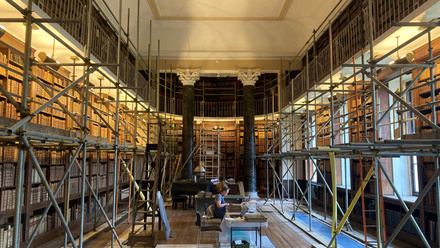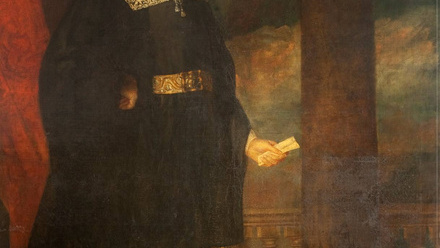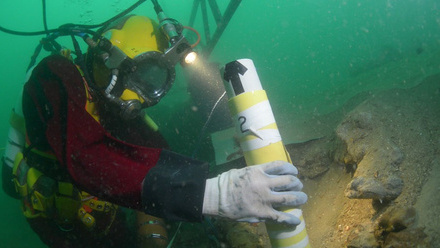A fiend, which has lurked unseen in a painting by Joshua Reynolds, has emerged following conservation work by National Trust. The painting has been restored by Icon member Sophie Reddington ACR at her studio in Hove, and Icon member Jonida Mecani restored the frame at National Trust's Royal Oak Foundation Conservation Studio.
The devil-like figure was included in a painting of a Shakespearean scene by the renowned artist, but proved to be controversial at the time.
Now back on display at Petworth House in West Sussex after treatment, the painting, which measures 2.185m x 1.575m, is one of four by Reynolds which the National Trust has conserved to mark the 300th anniversary of the artist’s birth.
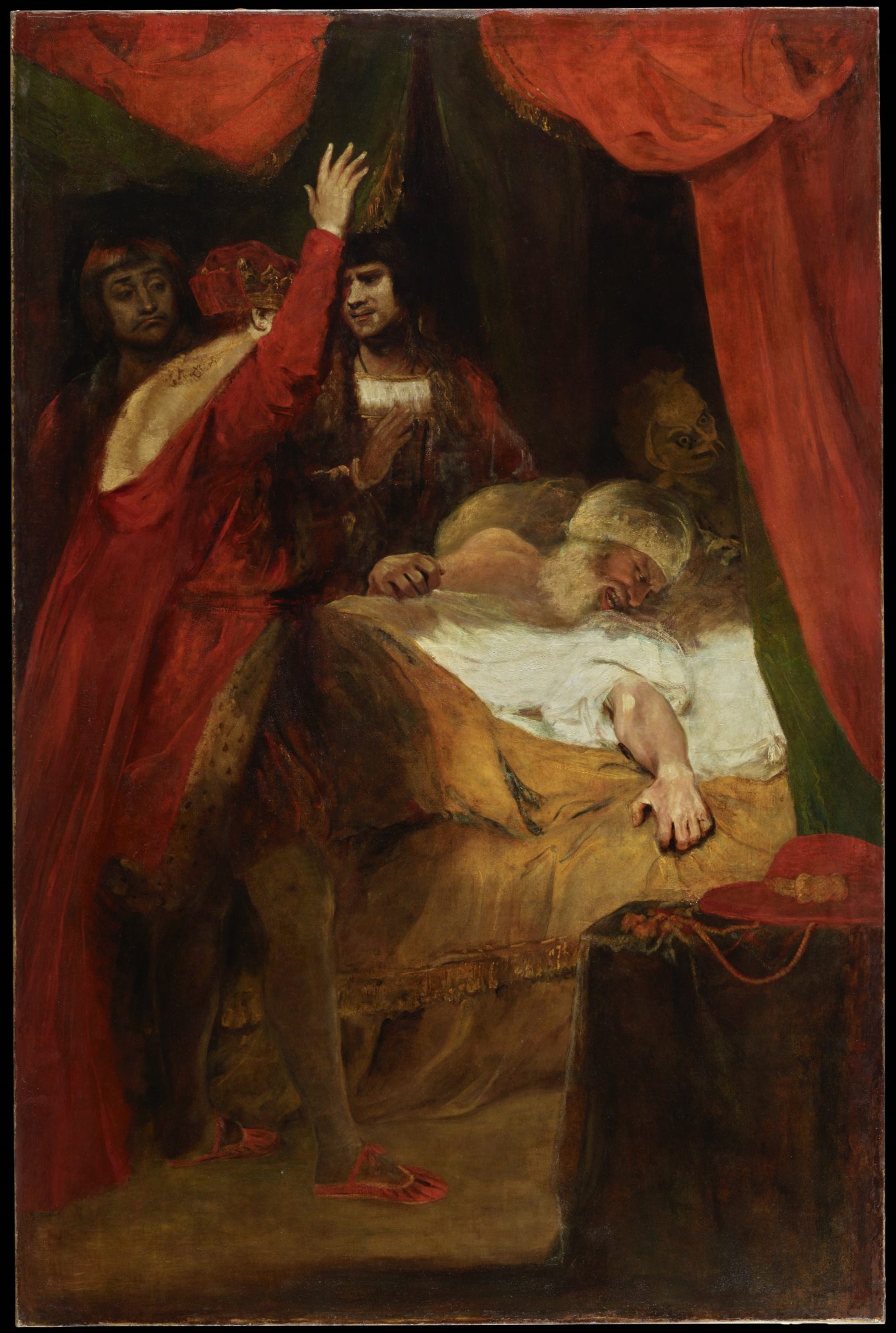
Sir Joshua Reynolds, Death of Cardinal Beaufort. After recent conservation, the painting by Sir Joshua Reynolds PRA shows The Death of Cardinal Beaufort (1377-1447) (from William Shakespeare's Henry VI, Part II, Act III, Scene iii). It is on display at Petworth House, West Sussex.
It shows a scene from Shakespeare’s Henry VI Part 2 with the King witnessing the death of Cardinal Beaufort. While the King implores God for a peaceful end for his great uncle, he declares “O! beat away the busy meddling fiend.”
While Reynolds was well known as a painter of portraits for the aristocracy, he also had an interest in historical themes, including gothic ones such as this. But the inclusion of the fiend lurking on the pillow behind the dying Cardinal was controversial at the time, as John Chu, the Trust’s Senior National Curator for Pictures and Sculpture, explains:
“It didn’t fit in with some of the artistic rules of the times to have a poetic figure of speech represented so literally in this monstrous figure. When it was first shown at the Shakespeare Gallery in 1789 it generated more controversy than any other work on show."
"While it was considered acceptable in literature to introduce the idea of a demon as something in the mind of a person, to include it visually in a painting gave it too physical a form. There were even people who argued that it should have been painted out, although records of conversations with the artist show he resisted such attempts to alter the work.”
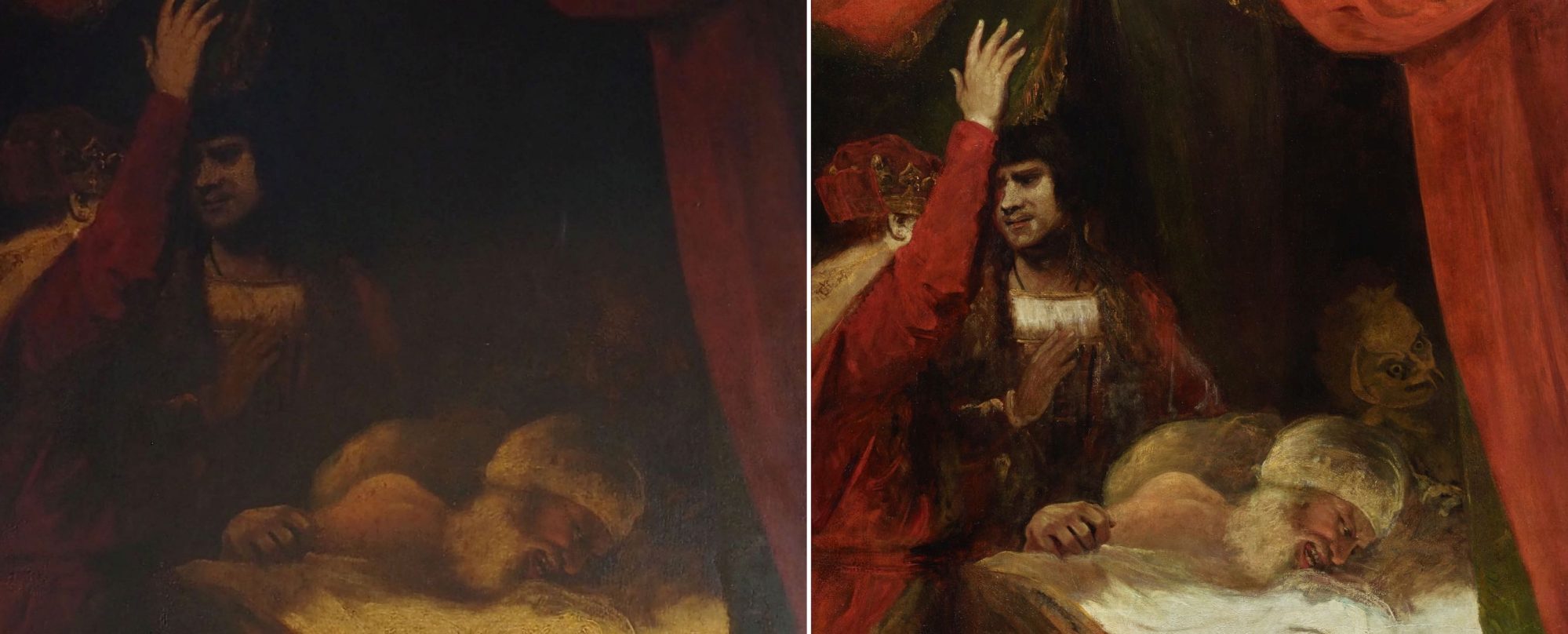
Conservator Sophie Reddington ACR who restored the painting said:
"Having already restored Reynolds’ largest painting 'Macbeth and the Witches' in 2015 which he also produced for the Shakespeare Gallery around the same time, I was expecting a similar challenge here. Little did I know that the treatment history of the 'Death of Cardinal Beaufort' let to new unexpected obstacles.
There was a lot of heat damage in the paint layers where they must have almost been melted during the lining process.
For the first time I came across little islands of cotton wool stuck in the varnish layer close to the original paint surface. Additional drip lines indicated the use of a solvent for varnish removal which must have been too harsh.
My intention was always to do a varnish reduction rather than a full clean, as we know how delicate and vulnerable Reynolds’ paint layers are. In the end I cleaned the painting to create a visual balance. It gave me many sleepless nights."
Icon member Becca Hellen ACR, the Trust’s Senior National Conservator for paintings, said the amount of overpaint was considerable:
Reynolds is always difficult for conservators because of the experimental way he worked, often introducing unusual materials in his paint medium, striving for the effects he wanted to achieve. The painting was lined, with an extra layer of canvas applied to the back, in the 19th centuryand at that time too much heat would have been applied.
“The area with the fiend was especially difficult. Because it is in the shadows, it was painted with earth browns and dark colours which would always dry more slowly, causing shrinkage effects. With Reynolds resinous and waxy mediums and pigments not aiding drying of the paint it was no surprise that the area of the fiend was a challenge. With the layers added by early restorers it had become a mess of misinterpretation and multiple layers of paints.”
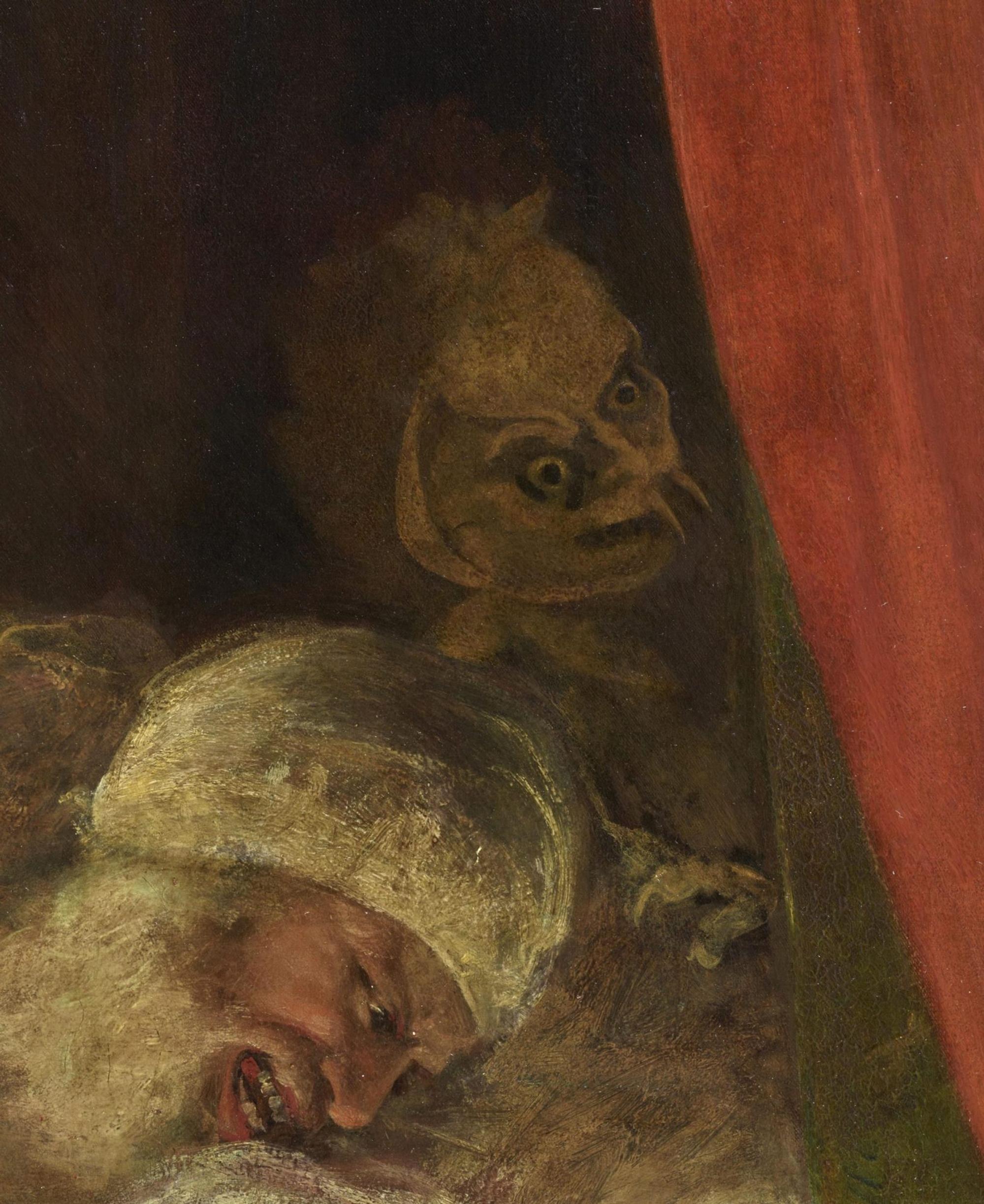
Detail of the 'fiend' in Joshua Reynolds, Death of Cardinal Beaufort
Becca Hellen continued: “This is a large painting and we wanted to ensure that it still represented what Reynolds originally painted, which included allowing the fiend to be uncovered, through removing all the non-original darkened varnishes and ensuring it still correctly showed its form and perspective with the work we did.”
In 1789 Humphry Repton, landscape designer and art critic argued that the evil spirit should only have been included if it had been listed as a character in the play by Shakespeare.
Another critic writing in The Times (7 May 1789) noted: “The Imp at the Cardinal’s bolster cannot spoil the Picture, but it does no credit to the judgement of the Painter. We rather apprehend that some Fiend had been laying siege to Sir Joshua's taste, when he determined to literalise the idea. The license of Poetry is very different from that of Painting; but the present subject itself is complete in itself, and wants not the aid of machinery from Heaven or Hell. In this enlightened period astonishment and pity wait upon it.”
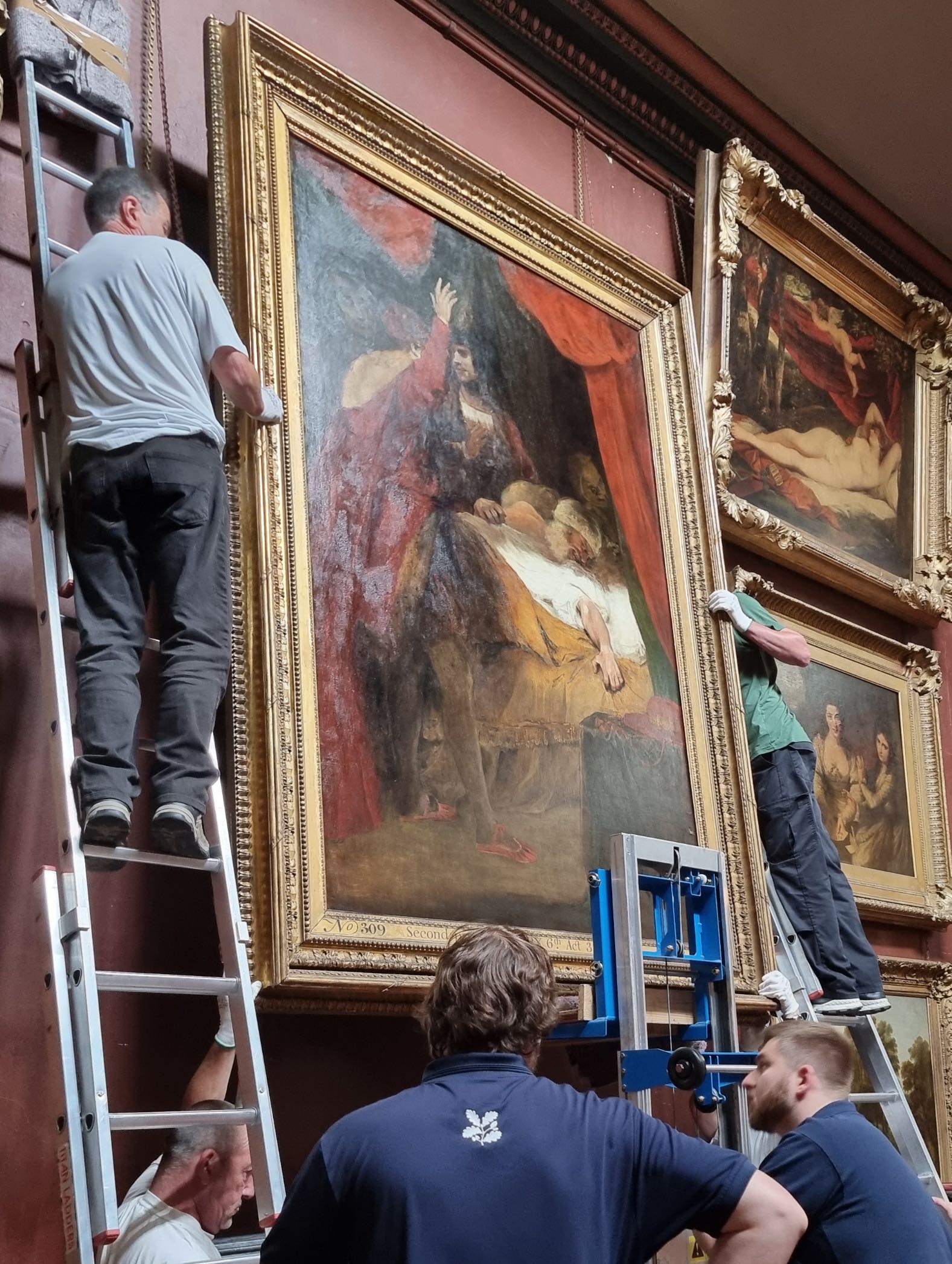
One voice of support came from Erasmus Darwin in 1791 who wrote: “. . . why should not painting as well as poetry express itself in a metaphor, or in indistinct allegory? A truly great modern painter lately endeavoured to enlarge the sphere of pictorial language, by putting a demon behind the pillow of a wicked man on his death bed. Which unfortunately for the scientific part of painting, the cold criticism of the present day has depreciated.”
The painting was created right at the end of Reynolds career in 1789 as a commercial commission for the Shakespeare Gallery in London’s Pall Mall which paid 500 Guineas for it.
The Gallery also created prints for sale and export, something Britain was dominant in at the time. Engraver Caroline Watson produced the plates for prints of the Reynolds painting, the first copies showing the fiend, although a second print run in 1792, after the artist’s death, showed an attempt to remove it from the printing plate.
Indeed, in the original painting, the character of the fiend was so degraded that it had the appearance of having been removed from there too.
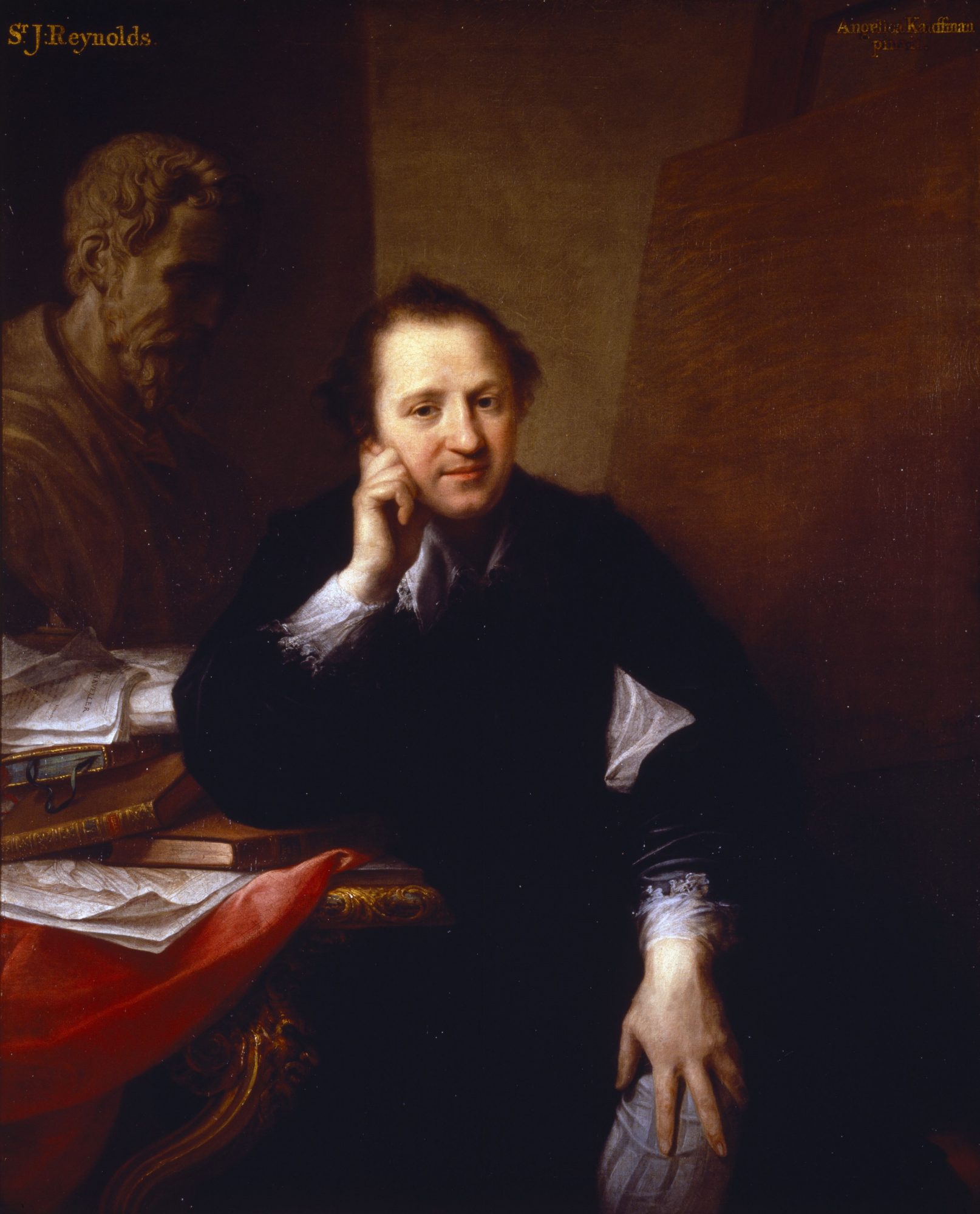
John Chu added: “It perhaps isn’t a surprise that it had receded so far into the shadows of the picture. It appears it was misunderstood by early conservators. Some decades after the painting was done, that area seems to have deteriorated into small islands of paint and become less clear due to the constituent parts of the paint. Degradation of successive varnish layers over the years made it even less visible.”
When examined closely by the National Trust’s paintings experts, it became clear the painting had been tackled by several hands with a lot of overpainting, when new paint is layered over the original work, as well as six layers of varnish.
In 1805 the Shakespeare Gallery’s collection was sold and this painting was bought by the 3rd Earl of Egremont at Petworth for £530.5s (the equivalent of about £38,000 today) The painting has remained at Petworth since then until it was recently conserved by the National Trust.




